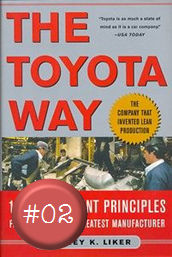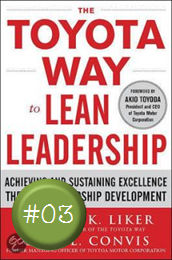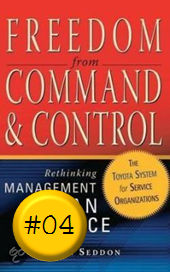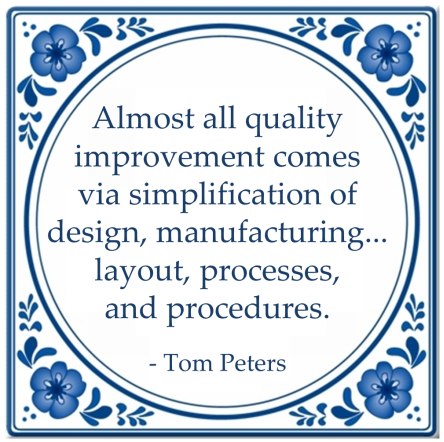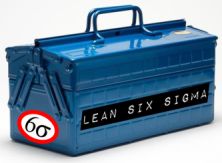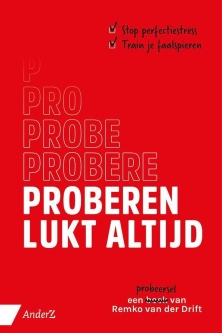
Taakanalyse
Definitie
...
![]()
Terminologisch heeft men het in professionele contexten niet alleen over leerdoelen, competenties, ... maar dikwijls ook over standaarden ('standards').
In formele instructiesettings staat vooral de analyse van kennisdomeinen en vakken centraal. Bij bedrijfsopleidingen staat vooral een job-analyse (functie-analyse) voorop, naast de concrete taken die een werknemer in die job uitvoert. Rowland en Reigeluth (1996) omschrijven taakanalyse als volgt:
"Het proces waardoor men beter begrijpt wat nodig is voor het uitvoeren en leren van een bepaalde taak, een vaardigheid, een procedure, of van het hanteren van een kennisgebied. (...) Taakanalyse kan ook helpen bij het bepalen van factoren zoals de omgeving waarin de taak het best uitgevoerd, het kritische karakter van de taak, typische fouten bij taakuitvoering en de gevolgen van goede en slechte taakuitvoering."
Vijf doelen staan voorop bij een taakanalyse: taken inventariseren, taken beschrijven, taken selecteren voor instructie, taken ordenen voor instructie (inclusief subtaken) en taken analyseren volgens inhoudsdomeinen. Een taakanalyse kan ook bekeken worden vanuit twee aparte perspectieven: (1) een gedragsmatige taakanalyse die helpt om alle noodzakelijke concreet observeerbare gedragingen in kaart te brengen en te ordenene met een flowchart, en (2) de cognitieve taakanalyse. Die laatste helpt om de onderliggende voorkennis in kaart te brengen. Dit helpt rekening te houden met de niet-observeerbare gedragingen ('overt behaviour').
Bron: Onderwijskunde als ontwerpwetenschap - van leren naar instructie, Martin Valcke (Deel-2)
![]()
Doel van de taakanalyse
Wil de ontwikkelaar een ontwerp kunnen maken voor een functie- of taakgerichte opleiding, dan zal hij een duidelijk beeld moeten hebben van de functie of taak waarvoor opgeleid moet worden. De taakanalyse is een hulpmiddel om dat noodzakelijke beeld te krijgen. Een taakanalyse is een specificatie van zowel waarneembaar als niet waarneembaar gedrag dat noodzakelijk is voor de uitvoering van ten taak of cen functie. Als we het woord functie gebruiken staat dit voor de verzameling van hoofdtaken, (deel)taken, taakelementen en handelingen die een medewerker in de organisatie uitvoert of behoort uit te voeren. Die indeling sluit aan bij de begripsomschrijving die Davies (1978, p. 52) en Romiszowski (1981) geven bij het woord functie. Is de functie bijvoorbeeld die van verpleegkundige, — dan is een van de hoofdtaken het toedienen van medicijnen; — een (deel)taak is het toedienen van een insuline-injectie; — een taakelement is het berekenen van de te injecteren hoeveelbeid (in ml) insuline om het gewenste aantal Internationale eenheden (in i.e.) van die stof toe te dienen; — een handeling is het vullen van de injectiespuit.
Door het algemene opleidingsdoel en de geformuleerde opleidingsbehoefte of opleidingsnoodzaak wordt aangegeven hoe omvangrijk de taakanalyse moet zijn: alle hoofdtaken uit een functie, slechts een hoofdtaak, of slechts een of enkcle (deel)taken. In de praktijk worden taakanalyses voor een groot aantal doelen gebruikt: bijvoorbeeld om selectiecriteria vast te stencil, taakwaardering te berekenen, reorganisaties voor te bereiden, om een leidraad bij beoordelingsgcsprekken samen te stellen of om opleidingsdoclen te formuleren.
Het doel van een opleidingskundige taakanalyse kan als volgt worden geformuleerd:
— het verzamelen van informatie over taken, op basis waarvan het mogelijk is concrete leerdoelen voor het opleidingsprogramma te formuleren;
— het vastleggen van de inhoud van ten functiegerichte opleiding;
— het produceren van een document op grond waarvan de opdrachtgever toestemming kan geven voor het verder ontwikkelen van een opleiding.
Davies (1978) formuleert de volgende doelen:
— het beschrijven van de taak die de cursist moet leren;
— het bepalen van de voor die taak vereiste gedragingen;
— het vaststellen van de condities waaronder die gedragingen voorkomen;
— het bepalen van een criterium voor ten aanvaardbare prestatie.
Tracey (1971) geeft de volgende doelen aan:
Het verschaffen van informatie over
— de inhoud van de taak;
— hoe de taak uitgevoerd wordt;
— waarom de taak uitgevoerd wordt;
— hoe de taak samenhangt met andere taken;
— de condities waaronder de taak uitgevoerd wordt;
— de criteria waaraan de uitvoering van de taak getoetst wordt;
— de frequentie van de taak;
— de gevaren die met de taak samenhangen;
— de gereedschappen, hulpmiddelen, materialen en dergelijke die bij de uitvoering gebruikt worden.
Deze informatie dient ertoe om:
— leerdoelen te formuleren;
— vereiste vaardigheden, kennis en persoonskenmcrken vast te leggen;
— het vooropleidingsniveau te bepalen;
— een basis te verschaffen voor het ontwerp van (vaardigheids)toetsen.
Romiszowski (1981) omschrijft het doel van een taakanalyse als volgt: Functie- (of taak-)analyse is een hulpmiddel in het ontwikkelproces waarmee leerdoelen vastgesteld kunnen worden in die situaties waarin de uiteindelijke doelen betrekking hebben op het vervullen van een specifieke functie.
(...)
Methoden om informatie te verzamelen:
1. Documentenstudie
2. Observatie
3. Individueel interview
4. Groepsinterview
4.1 Jury van experts
4.2 Focusgroepen
5. Enquete
6. Critical Incidents en
7. Zelf het werk uitvoeren
Bron: Kessels, J. W. M., & Smit, C. A. (1985). B1.3 Taakanalyses. Handboek Opleiders in Organisaties. No. 4, 1–38.
![]()
Task Analysis in Instructional Design
A task analysis is a systemic collection of data about a specific job or group of jobs to determine what an employee should be taught and the resources he or she needs to achieve optimal performance (DeSimone, Werner, Harris, 2002).
(...)
The following must be captured during this step of the Analysis Phase:
- Conditions: Tools or equipment needed and the environment the task is performed in.
- Performance Measure: How well must it be performed? Note that this sub-step is discussed in more detail in the next step, Build Performance Measures.
- Frequency: How often is the task performed (hourly, daily, weekly, etc.)?
- Difficulty: Use a standard scale, such as from one to five.
- Importance: What place of importance is this task as compared to the performer's other tasks?
- Steps: Logical steps for performing the task.
Bron: http://www.nwlink.com/~donclark/hrd/isd/tasks.html
![]()
Task analysis is considered the most critical part of the instructional design process (Jonassen, Hannum, & Tessmer, 1999). The analysis solves three problems for the designer:
- It defines the content required to solve the performance problem or alleviate a performance need. This step is crucial because most designers are working with unfamiliar content.
- Because the process forces the subject-matter expert to work through each individual step, subtle steps are more easily identified.
- During this process, the designer has the opportunity to view the content from the learner’s perspective. Using this perspective, the designer can often gain insight into appropriate teaching strategies.
Jonassen et al. (1989) have identified 27 different task analysis procedures that instructional designers can use to define the content for an instructional package. Selecting the best or most appropriate technique depends on a number of factors, including the purpose for conducting the task analysis, the nature of the task or content, and the environment in which the task is performed.
The terminology associated with topic and task analysis is often confusing. The instructional design literature frequently refers to the process of analyzing content as task analysis. Specific analysis procedures also go by a host of names. Some individuals refer to task analysis as a specific procedure for defining psychomotor skills, which leads to further confusion. The term content analysis is also confusing. Some researchers use this term to describe a methodology for analyzing text materials. Instructional designers use content, topic, or subject-matter analysis to define knowledge or content related to the instructional problem. In this lesson, we refer to task analysis as the collection of procedures for defining the content of an instructional unit.
Bron: https://sites.google.com/site/pnusicte03/lesson-9---task-analysis
![]()
How to Conduct a Task Analysis
Task analysis is another step in the analysis and objective setting process. Task analysis occurs after the needs assessment and the problem to be addressed by the instructional design has been identified.
Purpose
The purpose of the task analysis is to determine the content that will make up the instruction and to also determine in what order the content will appear.
The Morrison, Ross, Kemp approach to instructional design states that the task analysis answers solves three problems for the ID:
- What content is required for the learning to take place.
- The identification of subtle steps.
- The ID gains insight into the learner's perspective.
Gagne describes task analysis as a series of procedures performed by the instructional designer in order to gather information needed for the instruction.
Methodology
There are a number of approaches to task analysis, and the specific approach taken by the ID will vary based on what type of learning is being developed.
The Morrison, Ross, and Kemp (MRK) method says that the goals that are derived from the needs assessment and the analysis of the learner, specifically what knowledge and background the learner has, influence the content that is required for instruction. This information is the starting point for the ID, in developing objectives.
This approach states that there are three methods for task analysis:
(1) Topic analysis: Topic analysis works similarly to creating an outline, beginning with major information and working down to secondary information. A topic analysis provides information on the content that will make up the learning, as well as its structure. The content can be procedures, skills, facts, concepts, rules, or principles.
(2) Procedural analysis: A procedural analysis aims to identify steps that make up tasks. In this part of the task analysis, the ID will usually work with a subject-matter expert and walk through the steps in the procedure, in as close to the "real-world environment" as possible.
(3) Critical incident method: The critical incident method uses an interview format, wherein the instructional designer interviews the subject-matter expert to determine what skills and knowledge are required to complete the task.
The ID will use the three methods, and the information gathered from all three methods is compiled and used by the ID to write the tasks in the instruction.
Bron: https://www.webucator.com/tutorial/instructional-design/analyzing-objective-setting.cfm
![]()
Task analysis is a crucial part of any instruction as it determines what skills and knowledge ought to be taught, the objectives of the learning and the relevant performance assessments and evaluation. However, not all instructional design models or frameworks discuss task analysis; rather, most instruction design is based on assumptions or inspiration.
Without conducting task analysis, instruction faces the risk of falling apart when implemented, not achieving its intended learning outcomes or not meeting the needs and expectations of learners.
Task analysis is sometimes referred to as content analysis or learning task analy-sis in different approaches, but the central tenet is about determining the design of the tasks or of the learning content of the instruction.
For instance, Morrison, Ross and Kemp (2004) used three different techniques for analysing content and tasks: topic analysis, procedural analysis and the critical incident method.
When conducting topic analysis, the instructional designers determine the content and the structure of the content components. Steps that are required to complete the tasks are identified during procedural analysis, while using a critical incident method which predominantly relies on interviews helps the instructional designer to elicit information about the conditions that allow the learner to successfully complete the tasks or which prevent them from completing the tasks.
Smith and Ragan (2005) on the other hand offered a practical approach to conducting task analysis as they considered the process of task analysis as the process of transforming goal statements into a form that can be used to guide subsequent design. Jonassen et al. (1999) provided a more comprehensive view and approach to task analysis. In their book, the authors classified various task analysis methods into the broad categories of job, procedural and skill analysis methods, instructional and guided learning analysis methods, cognitive task analysis methods, activity-based methods and subject matter/content analysis methods.
Bron: Instructional Design Principles for High-Stakes Problem-Solving Environments, Chwee Beng Lee, José Hanham, Jimmie Leppink
![]()
Van taakanalyse naar leerdoelen
Het resultaat van de taakanalyse levert de informatie die nodig is voor de leerdoelenformulering. De gehele activiteit bij het analyseren van taken is er immers op gericht om informatie te verzamelen waarmee de volgende vragen kunnen worden beantwoord:
- Welke vaardigheden (psychomotorisch, sociaal of cognitief) en welke kennis, inzichten en welke houding of instelling zijn nodig om de onderhavige taak te kunnen uitvoeren.
De analysetechnieken leveren deze noodzakelijke informatie om de inhoudscomponent van de leerdoelen te kunnen vaststellen.
(...)
- Documentensutide;
- Observatie;
- Individueel interview;
- Jury van experts;
- Focusgroepen;
- Critical incidents;
- Zelf-het-werk-uitvoeren;
- Adoptie;
- Vergelijkingsanalyse;
- Simulatie;
- Enquête.
- Werkzaamheden (Wat?)
- Werkwijze (Hoe?)
- Hulpmiddelen (Waarmee?)
- Kwaliteitseisen (Normen?)
- Motivering (Waarom?)
- Aandachtspunten (Denk aan?)








